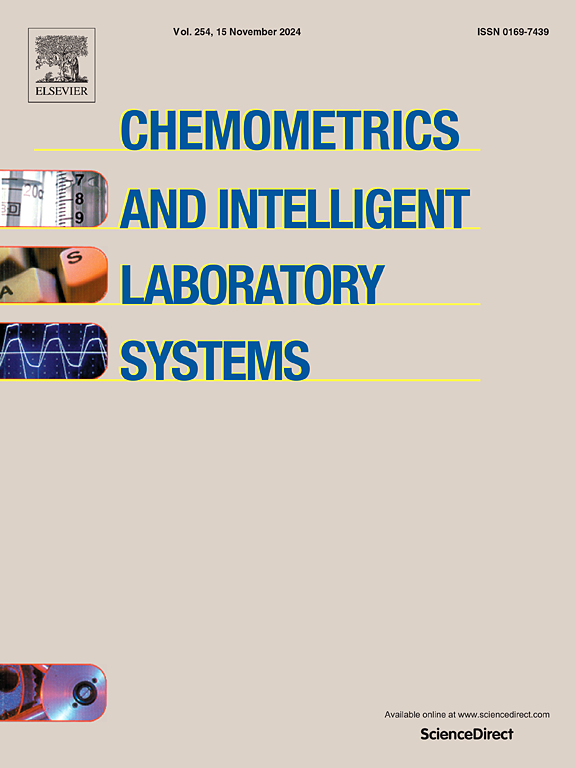基于广义变压器模型的核酸反应时间序列分析
IF 3.8
2区 化学
Q2 AUTOMATION & CONTROL SYSTEMS
Chemometrics and Intelligent Laboratory Systems
Pub Date : 2025-09-06
DOI:10.1016/j.chemolab.2025.105522
引用次数: 0
摘要
医学诊断和治疗干预的当代景观见证了时间序列数据生产的显著激增。人工智能(AI),特别是深度学习,在研究隐藏在这些诊断数据背后的高维和有意义的意义方面显示出了很好的价值。在这项工作中,我们提出了一种基于深度学习和纸微流体的智能核酸扩增测试(NAAT)分析方法。片上放大数据直接输入到由Transformer神经网络导出的深度学习模型。为了方便该方法的开发和部署,我们对Transformer模型进行了轻量级处理。验证了该模型准确预测反应趋势和终点值的能力。我们还通过烧蚀实验来评估各种参数对预测性能的影响,并对模型进行优化。然后利用福建省立医院706例阳性样本和205例阴性样本的3个临床数据集验证该方法的泛化性。在不改变模型结构和超参数的情况下,该方法的准确率、灵敏度和特异性分别为98.28%、97.52%和99.02%。基于循环神经网络和长短期记忆等9种不同的人工智能算法进行了进一步的比较研究。本研究具有促进预防大流行的常规诊断任务和推动智能便携式仪器发展的潜力。本文章由计算机程序翻译,如有差异,请以英文原文为准。

Time series analysis of nucleic acid reactions via a generalized transformer model
The contemporary landscape of medical diagnostics and therapeutic interventions has witnessed a remarkable surge in the production of time series data. Artificial intelligence (AI), particularly the deep learning, has presented promising values in investigating the high-dimension and meaningful significance hidden behind these diagnostic data. In this work, we propose a novel analytics for intelligent nucleic acid amplification tests (NAAT) based on deep learning and paper microfluidics. On-chip amplification data were straightforwardly fed to a deep learning model derived from Transformer neural network. To facilitate the development and deployment of the approach, we conducted a lightweight processing of the Transformer model. Then, the capacity of the model for accurately predicting the reaction trend and end-point value was validated. We also employed ablation experiments to evaluate the effects of various parameters on prediction performance followed by optimizing the model. Then, three clinical datasets including 706 positive and 205 negative samples obtained from Fujian Provincial Hospital were used to verify the generalization of the approach. Without any modification of the model structure and hyperparameters, accuracy, sensitivity, and specificity by the presented approach were 98.28 %, 97.52 % and 99.02 %. Further comparison studies based on the nine different AI algorithms including recurrent neural network and long-short term memory were performed. The presented study holds potential to facilitating routine diagnostic tasks for preventing pandemic and propelling the development of smart portable instruments.
求助全文
通过发布文献求助,成功后即可免费获取论文全文。
去求助
来源期刊
CiteScore
7.50
自引率
7.70%
发文量
169
审稿时长
3.4 months
期刊介绍:
Chemometrics and Intelligent Laboratory Systems publishes original research papers, short communications, reviews, tutorials and Original Software Publications reporting on development of novel statistical, mathematical, or computer techniques in Chemistry and related disciplines.
Chemometrics is the chemical discipline that uses mathematical and statistical methods to design or select optimal procedures and experiments, and to provide maximum chemical information by analysing chemical data.
The journal deals with the following topics:
1) Development of new statistical, mathematical and chemometrical methods for Chemistry and related fields (Environmental Chemistry, Biochemistry, Toxicology, System Biology, -Omics, etc.)
2) Novel applications of chemometrics to all branches of Chemistry and related fields (typical domains of interest are: process data analysis, experimental design, data mining, signal processing, supervised modelling, decision making, robust statistics, mixture analysis, multivariate calibration etc.) Routine applications of established chemometrical techniques will not be considered.
3) Development of new software that provides novel tools or truly advances the use of chemometrical methods.
4) Well characterized data sets to test performance for the new methods and software.
The journal complies with International Committee of Medical Journal Editors'' Uniform requirements for manuscripts.

 求助内容:
求助内容: 应助结果提醒方式:
应助结果提醒方式:


